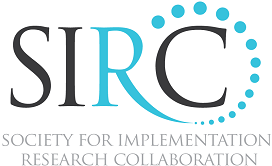Breakout Q – May 17, 2013
1. Sustainability of CBT for Youth Anxiety in Community Settings Following Implementation
Presenter: Rinad Beidas, PhD
Authors: Rinad Beidas, PhD,1 Julie Edmunds, MA,2 Margaret Mary Downey, BA,1 Mark Gallagher, BA,1 Jessica Watkins,3 & Philip C. Kendall, PhD, ABPP2
1University of Pennsylvania; 2Temple University; 3Bryn Mawr College;
Abstract: A recent experimental study examined whether various training methods and ongoing support resulted in differential outcomes in clinicians’ skill and adherence in implementing CBT for youth anxiety (Beidas, Edmunds, & Kendall, 2012). Results indicated that any of the three training methods resulted in somewhat improved skill and adherence but that consultation was the most robust predictor of therapist outcomes. However, little is known about the sustainability of therapist implementation of CBT following training and consultation. To optimize therapist implementation and sustained use of CBT, it is necessary to investigate therapist perspectives on their sustained use of CBT, as well as barriers and facilitators to use of CBT. The present study used semi-structured interviews conducted 2 years following the training and consultation provided in Beidas et al. (2012) with 50 therapists who participated in the initial study. Provider interviews were coded for the following themes: attitudes, practice change, facilitators, barriers, adaptation, organizational factors, self-efficacy, eclecticism, client factors, treatment factors, EBP language, and consultation. The findings from this study will shed much needed insight on how CBT for youth anxiety is sustained in community settings following training and consultation.
2. Supporting Implementation of the Triple P System: A Standardized Framework
Presenter: Jacquie Brown, MES, RSW
Jacquie Brown, MES, RSW,1 Jenna McWilliam, PhD,1 Sara van Driel, PhD,1 Randy Ahn, PhD, MLIS,1 Debbie Easton,2 Thomas Dirscherl,3 Ronja Born,3 Brad Thomas,4 Sarah Munro,1 & Rita Bostick, MA, LPC4
1Triple P International; 2Triple P Parenting Canada Inc.; 3Triple P Deutschland; 4Triple P America
Abstract: As a result of 15 years of dissemination and expansion in more than 20 countries, Triple P recognized the need to develop a flexible but standardized framework to support implementation of the Triple P System. The standardized framework is based in the RE-AIM (Reach, Effectiveness, Adoption, Implementation, and Maintenance) and National Implementation Research Network (NIRN) Active Implementation Frameworks and includes 5 main steps: 1) Engagement, 2) Commitment and Contracting, 3) Implementation Planning, 4) Training and Accreditation, and 5) Implementation Maintenance. In using this framework, Triple P hopes to increase utilization rates of trained practitioners, improve sustainability of the program in communities, and expand the use of Triple P as a public health approach.
In this presentation, we will provide an overview the framework, including each of the steps and the key activities within those steps, and discuss how the integration of implementation experience and implementation science contributed to the development of the framework.
3. Research Implementation within a Clinical Practice: Resolving the Science/Practice Dialectic
Presenter: Sally A. Moore, PhD
Authors: Sally A. Moore, PhD, Stacy Shaw Welch, PhD, Travis Osborne, PhD, Jennifer Sayrs, PhD, & Jennifer Tininenko, PhD, Evidence-Based Treatment Centers of Seattle & University of Washington Department of Psychiatry & Behavioral Sciences
Abstract: Conducting research within a clinical setting is a complex endeavor, particularly given that research and clinical work are often viewed as conflicting interests. Clinicians may fear that investment in research will detract from providing optimal treatment. We will discuss the Evidence-Based Treatment Centers of Seattle (EBTCS) as a case study illustrating the process of research implementation in a clinical setting. EBTCS is a treatment center with two primary missions: to provide evidence-based specialty care for individuals with anxiety disorders, borderline personality disorder, and other difficulties, and to conduct research relevant to the individuals we treat. We will discuss the tension that can naturally arise between research and clinical domains and our efforts to move research from the back burner into the spotlight without sacrificing clinical care. When implementing a research program, clinical settings face multiple dilemmas, including resource allocation, creating a research infrastructure, and data collection methods. We will discuss our evolution in meeting these challenges and potential future directions for research at EBTCS, such as outcome benchmarking, mechanisms of change, and modular treatment of anxiety disorders. We have come to view research as complementary to our clinical mission, and this perspective promotes successful research implementation in clinical practice.
